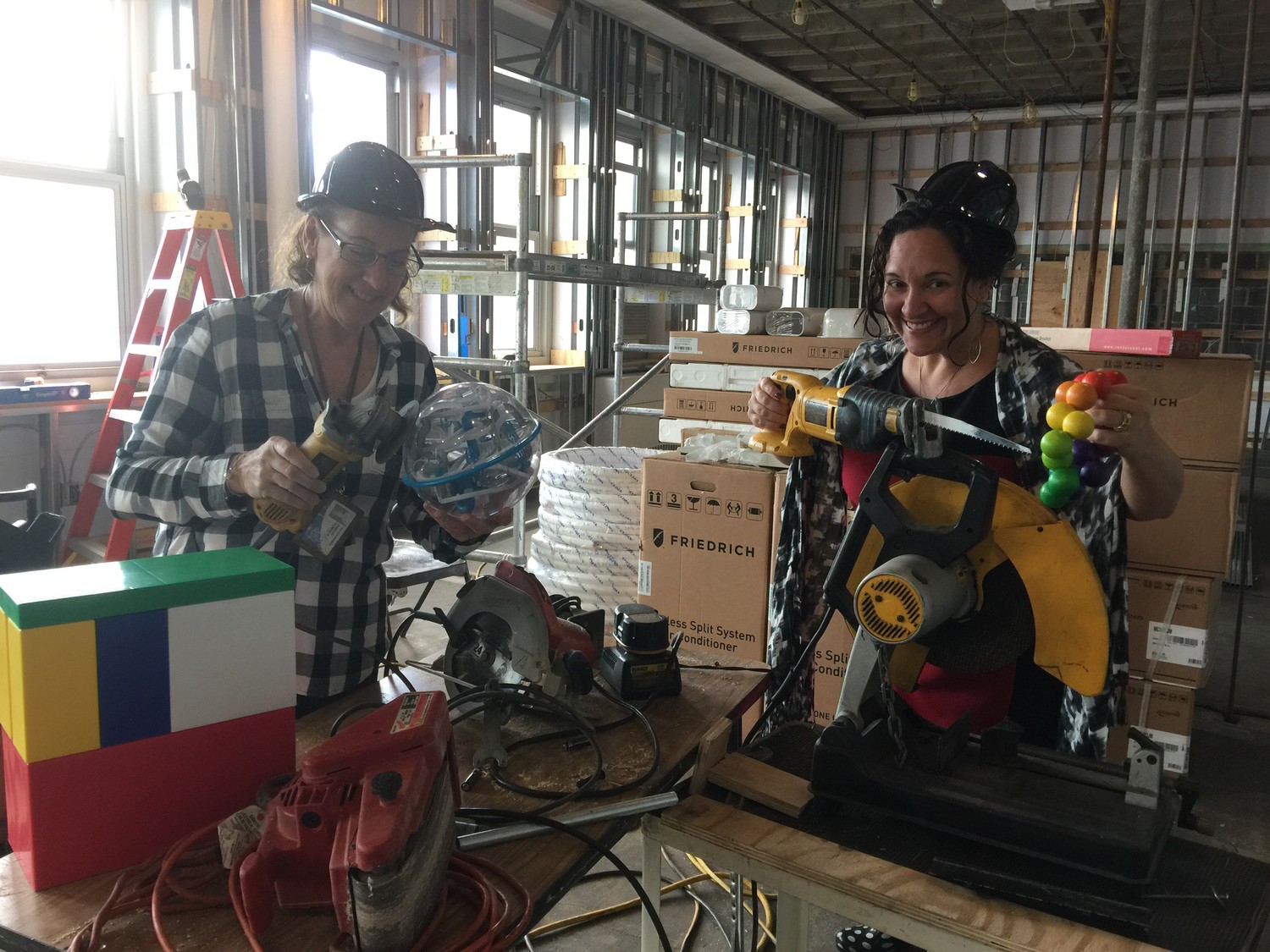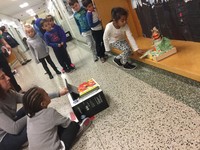Thanksgiving parade fun at School No. 6
Teachers get STEAM experience ahead of May learning lab ribbon cutting
Throughout November, kindergarteners at Oceanside’s School No. 6 have been designing and building their own living, breathing miniature Thanksgiving Day parades.
Using an iPad, teachers and students took pictures of each float — designed by the students — and moved them incrementally in front of an artistic rendering of the New York City skyline to create a stop-motion video.
The point was to give students hands on experience with what Tony Sarg, the puppeteer who inspired the Macy’s Day Parade, meant when he said, “Every little movement has a meaning of its own.” And served as a primer for the school’s new early childhood learning lab slated to open this spring.
The Oceanside Board of Education announced in March that they received $250,000 in state grant money, with the assistance of State Senator Todd Kaminsky. “This grant will allow Oceanside to create this state-of-the-art early learning lab, giving students the best opportunity to learn and flourish in their studies,” Kaminsky said, adding, “Modern, high-tech early learning is vital for our children.”
First, students read “Balloons Over Broadway,” a picture book about Sarg and how his creativity led to the invention of the parade’s iconic balloon characters. They were then supplied with bins — around four per class — of what School No. 6 principal Julie McGahan described as “random odd materials” donated by the community such as wire hangars, frilly ribbons, cardboard boxes and other household items.
Each bin eventually became a float, many of which took on the guise of popular children’s film and T.V. characters, like Nemo and Peppa Pig. The class decided on music to accompany their float, and helped write the parade’s narration to be read by the school’s English language learners.
McGahan said that giving the groups freedom to make their own decisions — to reason and compromise with each other — was a good way to put their “Big Ideas for Little Kids” program, a curriculum designed to teach philosophy to children through picture books, to the test.
“We go into all of the kindergarten classes and model how to have constructive debates, and how to be open minded,” McGahan said. “We teach them language structure like ‘I respectfully disagree.’”
The project is also a way to allow teachers to begin practicing the integration of a Science, Technology, Engineering, Arts and Mathematics, or STEAM, curriculum in anticipation of the lab’s opening.
“Usually,” McGahan said, “with projects like this, teachers would go step by step, and every kid would come out with roughly the same result.” She added that for teachers who want to make the most of the learning lab, “It’s a very different skill set.”
So far, room housing the future lab is still a work in progress. The wall between the library and the computer lab has been torn down, the floor pulled up, the sheetrock pulled off the walls and electrical outlets have been installed every four feet.
“Schools all over the place are starting to build maker spaces and green screen studios,” McGahan said. “We didn’t invent any of this.”
But, she added, “I don’t know of any other schools that have a compilation like this is going to be or any schools where the teachers have gotten so into it.”









